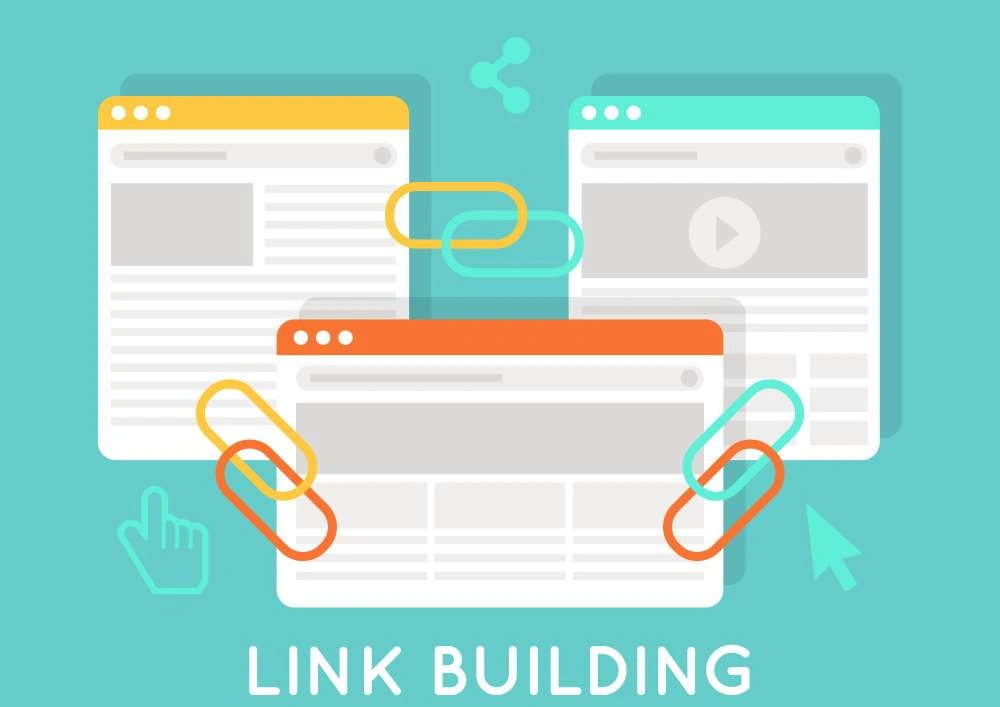Table of Contents
Key Takeaways:
- Backlinks are like digital word-of-mouth recommendations that influence search engine rankings.
- Not all backlinks are equal; quality, relevance, and authority matter more than numbers.
- Backlinks help build brand trust, increase visibility, and drive targeted referral traffic.
- Building backlinks requires a strategy: guest posting, PR outreach, creating link-worthy content, and more.
- Digital marketers must learn backlink analysis and link-building techniques to succeed in SEO-heavy markets.
- Entri’s AI-powered digital marketing course can help learners master backlinks and other SEO tools to stay competitive.
Introduction
Backlinks are one of the best ways digital marketers increase a site’s search rankings. Whether you’re new to SEO or an experienced marketer, knowing backlinks and what they mean for SEO is vital to bringing traffic and visibility to Google.
Backlinks, often called the backbone of SEO, are discussed in this comprehensive guide. We’ll explore what backlinks are, why backlinks are important, how backlinks impact SEO, different types of backlinks, and how you can build an effective backlink strategy to boost your website’s ranking.
What Are Backlinks?
1: What is the primary goal of SEO (Search Engine Optimization)?
Backlinks (also called incoming links or inbound links) are links from one site to another. They’re one of the basic tenets of SEO as Google and other search engines use them to judge a site’s authority and relevance. When a website links to another, it’s a vote of confidence, a sign that the other website is worthy and reliable.
Backlinks are the most important factor in search rankings. When trusted sites backlink to you, search engines treat this as a vote of confidence regarding your site’s authority on the topic. So, pages with good offsite backlinks generally appear at the top of SERPs and get more natural traffic.
Key Characteristics of Backlinks
- Definition: A backlink is essentially a hyperlink on one website that, when clicked, directs the user to another website.
- Significance for SEO: Backlinks act as endorsements, signaling to search engines that a website is credible.
- Reputation Building: High-quality backlinks improve your website’s online reputation, enhancing its rank on search engine result pages (SERPs).
In summary, backlinks are a form of digital “word-of-mouth” that helps websites grow their authority, reputation, and visibility online.
Achieve exceptional results with Digital marketing techniques! Enroll Here!
Become an AI-powered Digital Marketing Expert
Master AI-Driven Digital Marketing: Learn Core Skills and Tools to Lead the Industry!
Explore CourseTypes of Backlinks
Not all backlinks are created equal. The type of backlink and its source greatly influence its SEO value. Below are the primary types of backlinks, each with unique characteristics and implications.
a. Natural Backlinks
Natural backlinks occur organically. When a website chooses to link to your content without any prompting, it’s typically because your content is genuinely valuable. Natural backlinks are highly valued by search engines and positively affect SEO.
b. Manually Built Backlinks
These backlinks come from deliberate outreach efforts, like contacting industry sites, influencers, or journalists and requesting them to link to your content. While not as organic as natural backlinks, manual backlinks are still valuable and help build a strong backlink profile.
c. Self-Created Backlinks
Self-created backlinks are links that website owners manually place in forums, comments, or directories. Although common, self-created backlinks can be risky as search engines can penalize sites for overuse or unnatural link patterns. High-quality, contextually relevant links are essential for them to be effective.
d. Do-Follow and No-Follow Links
- Do-Follow Links: These pass on “link juice” (SEO value) to the linked site, helping improve search rankings.
- No-Follow Links: These do not pass SEO value but still help drive traffic and enhance brand visibility.
Other Types of Backlinks to Know:
- Editorial Links: Earned when your content is mentioned by others, such as in a blog or article.
- Resource Links: Placed on resource pages, these links point to content that provides valuable information for readers.
- Guest Post Links: Links placed within guest posts you publish on other sites.
- Directory Links: Links in online directories relevant to your industry.
How Backlinks Impact SEO Rankings
Backlinks directly impact SEO rankings through various mechanisms in the search engine algorithm. Here’s how they affect your site’s standing:
a. Boosting Domain Authority and Page Authority
Backlinks play a pivotal role in raising a website’s domain authority (DA) and page authority (PA). Higher DA and PA scores, derived from quality backlinks, improve a website’s overall ranking potential.
b. Enhancing Search Engine Crawling and Indexing
Backlinks act as pathways that search engine crawlers follow to discover and index new content. A strong backlink from a reputable site can significantly speed up this process.
c. Relevant Keyword Ranking through Anchor Text
Backlinks often include anchor text that search engines use to understand the linked content’s topic. When anchor text includes keywords relevant to your page, it can boost rankings for those keywords.
d. Increasing Credibility and Trustworthiness
When credible websites link to yours, it signals to search engines that your content is trustworthy, which increases your credibility and potentially raises your ranking.
In Summary: Backlinks are essential to SEO because they affect domain and page authority, assist with indexing, and influence keyword rankings, all of which boost search engine visibility.
The Importance of Backlinks
The importance of backlinks goes beyond improving SEO rankings. They play a multifaceted role in enhancing a website’s visibility, credibility, and overall user experience.
Key Benefits of Backlinks
- Increased Organic Traffic: Quality backlinks can lead to a significant increase in organic traffic as they make your website more discoverable.
- Improved Brand Visibility: Backlinks from high-traffic, reputable websites expose your brand to a broader audience, enhancing your online presence.
- Boosted Credibility: When high-authority sites link to your website, it boosts your site’s perceived authority, making users more likely to trust your content.
- Increased Referral Traffic: Backlinks drive referral traffic from other sites. This traffic is often more engaged since users come from related content and have an active interest in your niche.
- Better SEO Rankings: Backlinks are a critical factor in search engines’ ranking algorithms. Quality backlinks contribute to higher search engine rankings, helping your site appear in top positions.
Achieve exceptional results with Digital marketing techniques! Enroll Here!
Become an AI-powered Digital Marketing Expert
Master AI-Driven Digital Marketing: Learn Core Skills and Tools to Lead the Industry!
Explore CourseStrategies to Build High-Quality Backlinks
Building a strong backlink profile takes time and strategic planning. Here are effective methods for generating high-quality backlinks:
a. Content Creation and Promotion
Creating unique, valuable, and shareable content attracts backlinks organically. Types of content that attract backlinks include:
- Comprehensive Guides: In-depth resources that others link to as references.
- Data-Driven Content: Statistics, surveys, and reports can earn backlinks as they provide authoritative information.
- Infographics: Visually engaging infographics are often shared and cited by other sites.
b. Guest Blogging
Writing guest posts on authoritative blogs in your industry allows you to link back to your site. The key is to provide high-value content that genuinely helps the audience of the host site.
c. Broken Link Building
This strategy involves finding broken links on other websites and suggesting your content as a replacement. Many website owners are open to replacing broken links with quality content since it improves their site’s user experience.
d. Partnering with Influencers
Collaborating with influencers who can mention or link to your content provides you with valuable backlinks and wider reach.
e. Participating in Industry Forums and Communities
Actively engaging in industry-related forums, such as Quora or Reddit, allows you to contribute useful insights and, when relevant, link back to your content. This strategy should be applied carefully to avoid appearing spammy.
f. Leveraging Social Media for Link Building
Social media platforms help distribute your content widely, indirectly attracting backlinks. While social shares aren’t technically backlinks, they can increase exposure and potential backlink opportunities.
Summary of Backlink Strategies:
- Content Creation and Promotion – Publish engaging content that attracts organic links.
- Guest Blogging – Reach new audiences and link to relevant pages.
- Broken Link Building – Offer your content as a replacement for broken links.
- Influencer Collaborations – Work with influencers to expand reach and link possibilities.
- Forum Engagement – Link back to your site in valuable forum contributions.
- Social Media Promotion – Use social media to increase exposure and indirectly attract backlinks.
Backlink Analysis: How to Monitor Your Backlink Profile
Monitoring your backlink profile is essential to maintain a strong and reputable online presence. Below are steps for effective backlink analysis:
a. Use SEO Tools for Backlink Tracking
Tools like Ahrefs, SEMrush, and Moz provide comprehensive backlink tracking capabilities, including link quality assessment and historical data for performance analysis.
b. Check Domain Authority of Linking Sites
High domain authority sites offer more SEO value. Regularly reviewing the DA of sites linking to yours ensures that your backlinks are coming from reputable sources.
c. Analyze Anchor Text Diversity
To avoid search engine penalties, maintain a diverse anchor text profile. Vary anchor texts naturally and avoid over-optimization of keywords to prevent potential penalties.
d. Identify Harmful or Spammy Links
Detect and disavow low-quality or spammy links. Regularly checking for links from suspicious sites helps prevent negative SEO impacts. Tools like Google’s Disavow Tool allow you to request that these links be disregarded in ranking calculations.
How AI Is Shaping Backlink Analysis and Prediction Models
Artificial intelligence (AI) is rapidly changing SEO practices, and backlink analysis is no exception. Here’s how AI enhances backlink strategies:
a. AI-Powered Link Quality Analysis
AI can swiftly analyze backlinks for quality and relevance. It assesses various factors like link source, domain authority, and context, helping users focus on valuable backlinks and avoid low-quality links.
b. Predictive Modeling for Link Opportunities
Machine learning algorithms analyze vast amounts of data to identify backlink patterns and predict which types of links are likely to improve rankings. Predictive modeling helps SEOs prioritize the most promising backlink opportunities.
c. Anomaly Detection and Risk Management
AI tools detect unusual backlink patterns, such as sudden spikes or drops in links, which can indicate issues like negative SEO attacks. Quick identification allows SEOs to take corrective action swiftly.
d. Enhanced Anchor Text Optimization with AI
AI-driven tools analyze successful backlink anchor text from competitor sites and suggest improvements. This enables a balanced and SEO-friendly anchor text profile that aligns with search engine guidelines.
e. AI-Driven Content Suggestions for Link Building
AI tools can help generate content ideas that are more likely to attract backlinks. By analyzing content trends, AI suggests topics and formats that are popular within specific niches, facilitating the creation of linkable assets.
AI Applications for Backlink Analysis:
- Link Quality Scoring – Assess backlink quality with advanced algorithms.
- Opportunity Prediction – Identify high-potential link-building sources.
- Anomaly Detection – Spot and manage backlink profile changes.
- Anchor Text Optimization – Get anchor text recommendations based on industry standards.
- Content Suggestions – Discover link-attracting content ideas.
Achieve exceptional results with Digital marketing techniques! Enroll Here!
Common Backlink Myths and Misconceptions
There are many myths about backlinks that can mislead your SEO strategy. Let’s bust some common misconceptions:
a. “All Backlinks Are Good”
Not all backlinks are good for SEO. Links from spammy, low authority sites can hurt your rankings. Focus on quality, not quantity.
b. “More Backlinks = Higher Rankings”
More backlinks can help, but it’s quality that matters most. A few high-quality links are way more valuable than many low-quality ones.
c. “Anchor Text Should Always Be Keyword Rich”
Over-optimizing anchor text with exact match keywords can get you penalized. A natural, diverse anchor text profile is better.
d. “Self-Created Links Are A Safe Strategy”
Too many self-created links from low-quality sources can get you penalized. Organic link building is generally safer and more effective.
Master Backlink Building with Entri’s AI-powered Digital Marketing Course
Want to master backlinks and other advanced SEO techniques? Entri’s AI-powered Digital Marketing Course has got you covered. This course covers backlink building strategies, content optimization, and AI-driven insights. You’ll get hands-on experience in link building and SEO to improve your website’s ranking and drive more organic traffic.
Sign up today to upskill your digital marketing and build a strong backlink strategy that will take your website’s SEO to new heights.
Conclusion
Backlinks are one of the most important factors in SEO and digital marketing. By understanding the types of backlinks, how they affect SEO, and best practices for building a backlink strategy, digital marketers can boost their website’s visibility, authority, and overall search ranking.
With the right backlink building approach, your website can have sustained organic growth and more traffic. Entri’s AI-powered Digital Marketing Course will equip you with the skills to implement a backlink strategy that will keep you ahead in the game of SEO.
Frequently Asked Questions
What are backlinks, and why are they important for SEO?
Backlinks are links from one website to another. They are important for SEO because search engines view them as “votes” for your content, signaling that it is valuable and trustworthy. High-quality backlinks can help improve your site’s ranking on search engine results pages.
What is the difference between a “do-follow” and a “no-follow” backlink?
A “do-follow” backlink passes SEO value, or “link juice,” to the linked site, which can boost its ranking. A “no-follow” backlink does not pass SEO value. While “no-follow” links don’t directly impact rankings, they can still drive traffic and increase brand awareness.
How can I create high-quality backlinks for my website?
Some effective ways to build high-quality backlinks include:
- Creating valuable, shareable content
- Guest posting on reputable blogs
- Reaching out for broken link-building opportunities
- Partnering with influencers
- Participating in relevant forums and online communities
How do I know if a backlink is “high quality”?
High-quality backlinks usually come from reputable, authoritative websites with high domain authority. These links are relevant to your industry, use natural anchor text, and come from sites that are not spammy or low-quality.
Can backlinks hurt my website’s SEO?
Yes, low-quality or spammy backlinks can harm your SEO. If you have too many backlinks from unrelated, low-authority, or spammy websites, it can hurt your search engine ranking. In some cases, Google may even penalize your site for unnatural link patterns.















